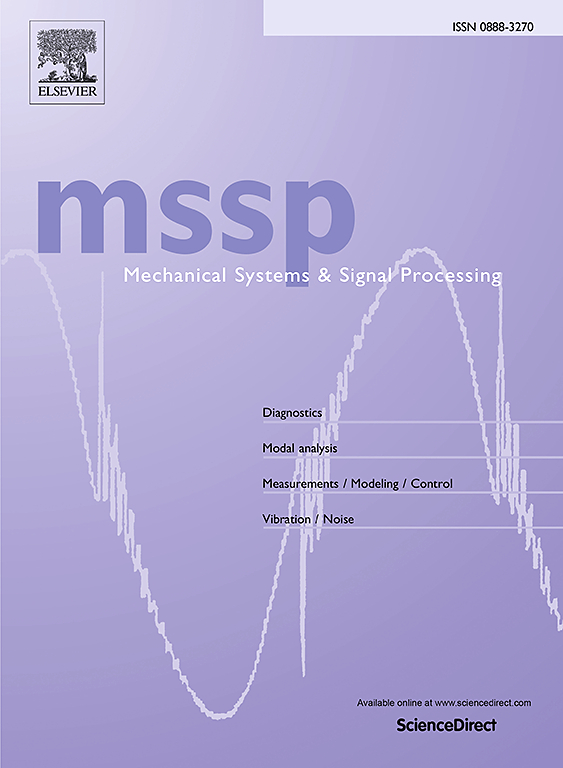为直接识别电传动装置齿轮啸叫噪声,对润滑齿轮接触进行了全面的摩擦动力学分析
IF 8.9
1区 工程技术
Q1 ENGINEERING, MECHANICAL
引用次数: 0
摘要
本文主要研究了斜齿轮传动电传动装置的齿轮啸叫噪声问题。采用分析与实验相结合的方法,更好地了解动态传动误差(DTE)是产生齿轮啸叫噪声的根本原因。建立了基于势能法计算时变啮合刚度的全解析齿轮模型。采用基于润滑状态识别的润滑接触模型来精确地解释接触刚度和阻尼的变化。观察到润滑接触的局部变化会产生DTE和动态载荷特征的波动。从测量的加速度和声压信号与预测的dte之间的比较中观察到,波动的频率由啮合频率(包括其倍数)与齿轮副谐波频率之间的共振决定。观察到润滑接触刚度的波动幅度较大,其次是DTE的过度振动,当啮合频率的倍数同时与齿轮副谐波和超谐波相吻合时。叠加效应加剧了振动,表明可能出现更高的齿轮啸叫噪声。较低的齿轮箱和啮合顺序传播为空气噪声,而较高的频率倍数作为结构振动更明显。这种综合分析将发出的齿轮啸叫噪声和振动与齿轮接触润滑制度的变化联系起来,是本研究的新颖贡献,迄今为止尚未报道斜齿轮啸叫噪声和EDU NVH分析。本文章由计算机程序翻译,如有差异,请以英文原文为准。
Comprehensive tribodynamic analysis of lubricated gear contacts for direct identification of gear whine noise in electric drive units
This study focuses on gear whine noise of electric drive units (EDUs) with helical gear transmission. A combined analytical and experimental approach is adopted to better understand dynamic transmission error (DTE) as the root cause of emitted gear whine noise. A fully analytical gear model based on potential energy method is developed to calculate time-varying meshing stiffness (TVMS). A lubricated contact model based on identification of regimes of lubrication is applied to precisely account for contact stiffness and damping variations. It is observed that local variations in lubricated contact generate undulations in DTE and dynamic load signatures. The frequency of the undulations, as observed from the comparison between the measured acceleration and sound pressure signals and the predicted DTEs, is determined by the resonance between the meshing frequency (including its multiples) and the harmonic frequencies of the gear pair. Greater amplitudes of undulations in lubricated contact stiffness are observed, followed by excessive vibrations in DTE, when multiples of meshing frequency coincide with gear pair harmonics and super-harmonics simultaneously. The superimposition effect exacerbates the vibrations indicating possibility of higher gear whine noise. Lower gearbox and meshing orders propagate as airborne noise, whilst higher frequency multiples are more noticeable as structural vibrations. Such comprehensive analysis linking the emitted gear whine noise and vibrations to the changes in the regime of lubrication in gear contacts is novel contribution of this research and has not hitherto been reported for helical gear whine noise and EDU NVH analyses.
求助全文
通过发布文献求助,成功后即可免费获取论文全文。
去求助
来源期刊

Mechanical Systems and Signal Processing
工程技术-工程:机械
CiteScore
14.80
自引率
13.10%
发文量
1183
审稿时长
5.4 months
期刊介绍:
Journal Name: Mechanical Systems and Signal Processing (MSSP)
Interdisciplinary Focus:
Mechanical, Aerospace, and Civil Engineering
Purpose:Reporting scientific advancements of the highest quality
Arising from new techniques in sensing, instrumentation, signal processing, modelling, and control of dynamic systems
 求助内容:
求助内容: 应助结果提醒方式:
应助结果提醒方式:


